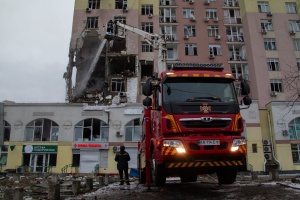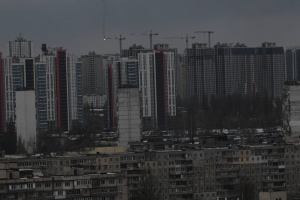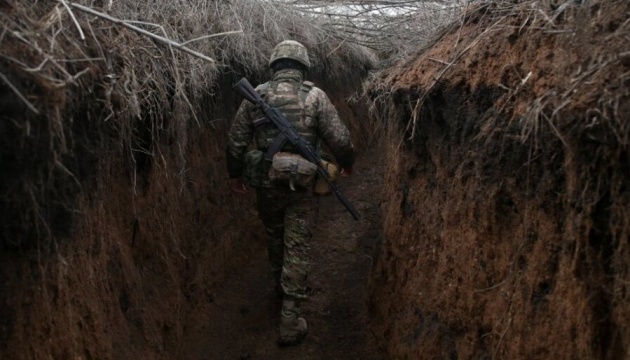
Russia wants endless "trench warfare" like in First World War
A minefield at the Tokmak-Melitopol bridgehead blocked the advance of Ukrainian troops for several weeks while sappers slowly cleared the assault route, but now this barrier has been overcome. The Armed Forces of Ukraine have broken through Russia's first defense line. The second, main line is next.
So what are our prospects in the south in general?
THE ENEMY'S SECOND LINE OF DEFENSE: WILL IT ACTUALLY BE EASIER TO BREAK THROUGH?
Today, many experts, both Ukrainian and Western, constantly emphasize that the enemy's second line of defense, the so-called "Surovikin line," is less fortified and will be much easier to overcome than the first line.
However, are these expectations too high? What problems might the Armed Forces of Ukraine still face?
In a commentary to Ukrinform, Oleksandr Kovalenko, a military and political observer of the Information Resistance group, called the second line of defense of the Russian Federation different, but not easier.
The depth of the second line of defense can be up to 15 km. The difference between these lines of defense is that the first is total mining: hypertrophied minefields. The second line has a mechanized component.
"This is a large number of armored personnel carriers, tanks, and artillery. The equipment is deployed on the border with the third line in order to somehow protect themselves from highly effective counter-battery combat by the Defense Forces of Ukraine," the military and political observer explained. - "If earlier our problem was demining, now it is the destruction of iron.
Our soldiers have already started this process. In August, an absolute record was set for destroyed Russian artillery - 691 units. Mr. Kovalenko says that this exceeds the capabilities of the Russian military-industrial complex to compensate for such a large loss.
Similarly, August was the second highest month in the entire period of the Great War for the destruction of enemy vehicles and fuel and lubricant tanks - 685. More was burned only in March 2022 (865 units), when the occupiers' logistics convoys were destroyed non-stop near Kyiv.
But that's not all.
"There is an interesting nuance. Already during our counteroffensive, the Russians began to use reserves from the second line of defense. And now they have exhausted units on the second line. That is, they have almost no reserves left. They are forced to pull reserves from other footholds. In addition, each unit does not have a full complement of equipment, and the mechanized component is not perfect. So we can say that the Russians on the second line do not have the full functionality of their units to conduct defense."
For example, the staffing of the Dnipro and Vostok groups of troops fighting in the South is among the worst in the combat zone. The occupiers simply do not have time to compensate for their losses and provide the units with equipment.
"From this, we can draw cautious conclusions that the Russians on the second line of defense will put up less resistance than they did on the first line. Although, again, no one is saying that it will be easy for our troops. However, I do not rule out that the Armed Forces of Ukraine will be able to reach Tokmak by the end of September," emphasized Kovalenko.
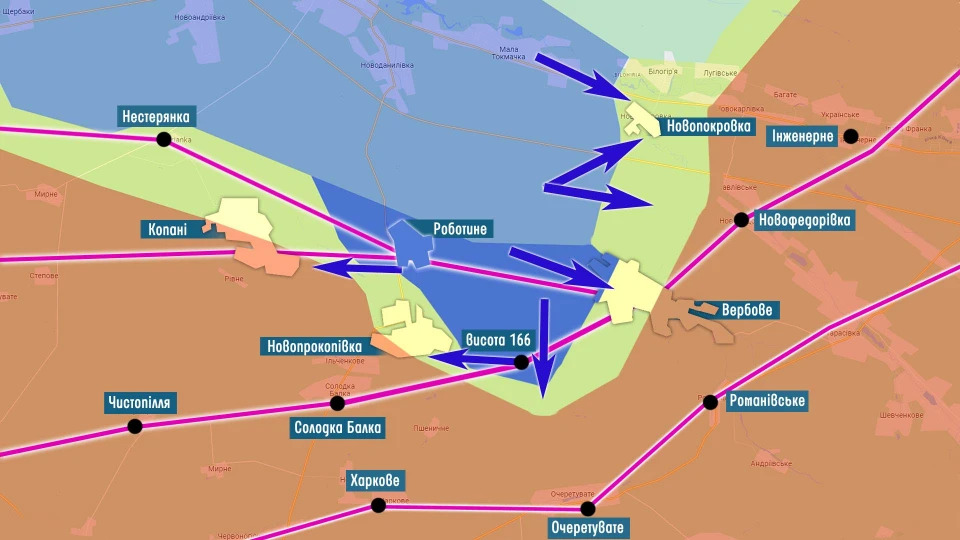
Colonel Serhiy Hrabsky, a reserve officer in the Armed Forces of Ukraine, says that the second line of defense of the Russian Federation is not as powerful as the first, but...
"The most important thing is that we already have limited maneuverability there. It is an extremely difficult task to gnaw through corridors in dense, continuous minefields. This is a narrow strip of land through which our units could only infiltrate," the military expert emphasizes. - "With the advance to the second line of defense, we still have less dense minefields. However, it is still difficult, it must be understood. But we get the opportunity to maneuver our armored and mechanized units, which allows us to expand this pressure corridor and create the preconditions for entering the operational space. Without unnecessary pathos, the next few days, a couple of weeks will determine the development of the situation in the southern direction."
BURNING MINEFIELDS TO STOP THE LANDSLIDE: THE EFFECT OF SUCH ACTIONS IS SHORT-TERM, IT SAYS MORE ABOUT THE ENEMY'S CONFUSION
The American edition of The New York Times published a news item: "The Russians have begun using a new tactic in the south, where the Ukrainian offensive continues: they pour flammable substances on their own mined fields, and then, when the Ukrainian army starts moving, they use a drone to drop a grenade, causing fires and explosions."
Well, there are two points here.
First. We must note that the Russian tactic, which the NYT journalists for some reason call "new," is far from new. The combustible mixture known as Greek fire was used in the Middle Ages. In more recent history, a similar tactic was used during the relatively recent war in Yugoslavia.
Second. It is difficult to understand the Russians' intentions, because, in a simple way, by setting fire to their own minefields, they are actually clearing what they themselves have mined. So, should this be to our advantage? So the question is: firstly, why are they doing this, and secondly, will it really help them to deter the Armed Forces of Ukraine?
Oleksandr Stupun, spokesman for the Joint Press Center of the Defense Forces in the Tauride sector, said that the tactic of setting minefields on fire to impede the advance of the Armed Forces of Ukraine is not new and has been used by the enemy since 2014. And today it is not a widespread phenomenon.
"Such actions lead to both positive and negative results for the enemy, because in this way they clear their minefields themselves [so we were not mistaken]. But there are a lot of fools in Russia, so maybe they will continue to do this," says Mr. Stepun.

Serhiy Grabsky adds that setting minefields on fire has a short-term effect similar to mortar shelling.
"When a unit enters a certain area of a minefield, they create a zone of continuous fire with explosions. This is dangerous, but I emphasize the key word - short-term. This is a manifestation of the enemy's desperation, which finds no other way to hold back our units," the reserve colonel said. - "And the third factor is the scorched earth factor, the enemy is doing everything possible to turn these areas into a desert while retreating.
Mr. Grabsky added that the occupants, by creating a fire and mine screen in this way, are trying to gain some time, literally half an hour or an hour, to retreat to some positions and gain a foothold there.
This is Mykola Malomuzh, Army General, former head of the Foreign Intelligence Service of Ukraine in 2005-2010: "The enemy's burning of minefields is amateurish, which indicates their confusion. The second and third lines of Russian defense are weaker. We are able to move forward more effectively. That's why the enemy is confused, because they realize that they will not be able to hold their positions. Therefore, on the one hand, they are suspending our movement for a while. But on the other hand, their minefields are exploding as a result of such actions. So once again: this is amateurishness of the Russians, and it has no prospects."
Roman Svitan, a reserve colonel in the Armed Forces of Ukraine, believes that the Ukrainian army could also use similar tactics.
"We have known about igniting minefields since the war in Yugoslavia. Volumetric detonation bombs can be used to clear the territories on the contact line," the military expert explains. - "At present, we have not cleared even 1% of all mines laid by the Russian Federation in the Tauride direction. And Ukraine has a sufficient supply of high-explosive bombs, as they have hardly been used before."
TOKMAK: IS IT WORTH TAKING THIS CITY DIRECTLY OR NOT, AND WHAT ARE THE RISKS?
After we have passed Robotyne, we are advancing near Novoprokopivka and Verbove, it is obvious that Tokmak is the goal. There are several questions about this:
1. Is it necessary to physically take this city now, or is it better to bypass it?
2. If we go around Tokmak, are there any risks in this, such as being exposed to an enemy attack from the flank?
3. If we do take Tokmak... There is an opinion that the battle for this city could become a kind of modern Verdun [from the First World War] or a second Bakhmut, however, not for the Russian occupiers, but for the Armed Forces of Ukraine?
We ask experts what they think about all this. A little spoiler: Ukrainian Tokmak will definitely not become the French Verdun, but whether or not to enter the city is a question.
According to Oleksandr Kovalenko, there are two options here: either the Russians will flee Tokmak, i.e. make another "gesture of goodwill," or they will hold the line to the last drop of blood.
The military expert is betting on the first option. And he explains why.
О. Kovalenko: "According to the way things are going now, we can say that the Ukrainian defense forces have chosen the main direction - the 0408 road, or rather the right and left flanks of this road.
In addition to it, there is an exit to Ocherevatove with a cut in the 0401 road. So, if we go to Tokmak via the 0408 road and also via the 0401 road, the city will be blocked from the north and northeast.
Finally, from 0408, through the settlements of Chervona Hirka or Sadove, we can go to the P-37 road to block Tokmak from the northwest.
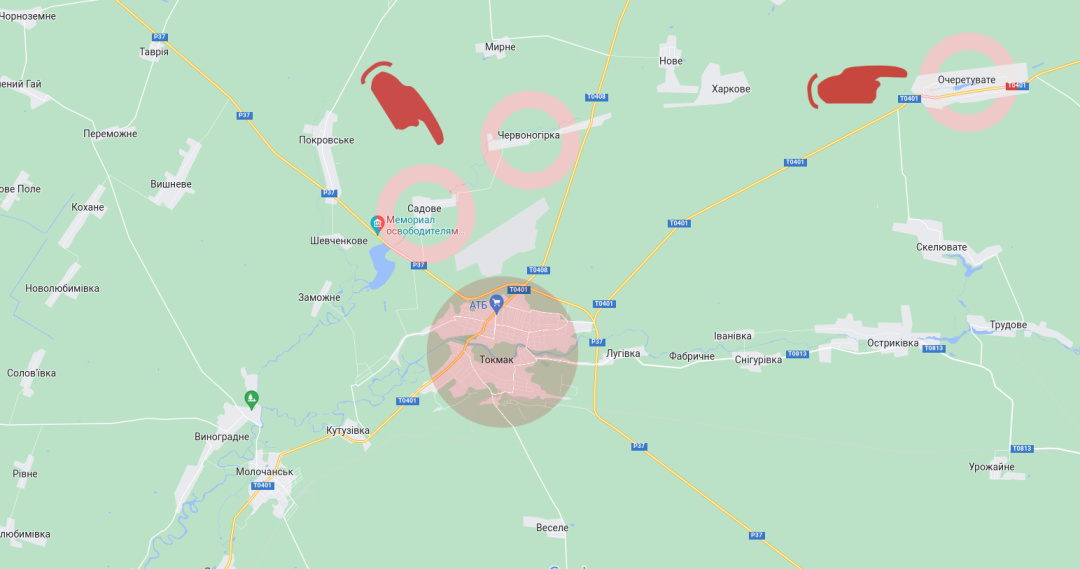
There are many options. It is up to the General Staff to decide what will happen. However, we are indeed capable of semi-encircling Tokmak. And later, we can close Tokmak in an operational environment."
Of course, the occupation command sees and understands all this. But...
"They are not doing well with reserves in the Zaporizhzhia sector. As I said before, significant forces were deployed to prevent the breakthrough of the first line of the Armed Forces of Ukraine. Therefore, most likely, the Russians will soon make a "gesture of goodwill" and flee Tokmak in order to save the remnants of personnel, to save at least some equipment, and, in the end, to save at least something," the military observer believes.
And this is Pavlo Lakiychuk, head of security programs at the Center for Global Studies "Strategy XXI": "Shoigu is already telling the Russians: "The most tense situation is on the Zaporizhzhia direction". But he is not yet talking about the inevitability of "unpopular decisions". Indeed, we have had success on the Tokmak-Melitopol direction. But it's too early to talk about storming Tokmak or its siege. The enemy is transferring reserves to the flanks of our "wedge", which means it intends to attack from the flanks [between Orikhiv and Robotyne, for example, which are being shelled by Russian artillery.] We have to secure them for further offensive."
If it comes to the liberation of Tokmak, he said, covering it from the east and southeast looks like the most obvious option.
"However, it is up to our command to decide. It may turn out during this time that Tokmak was not the main target. And not even Melitopol. The point of the main attack is in a completely different place. Therefore, we should not compare the offensive in the south with the Battle of Verdun," emphasized Mr. Lakiychuk.
Roman Svitan reminds: "Tokmak itself is a logistics hub. It is from Tokmak that part of the Kherson and Zaporizhzhia territories occupied by the Russians are supplied. There are three branches to Tokmak: a railroad from Chernihivka to Tokmak, a highway from Berdiansk to Tokmak, and a highway from Melitopol to Tokmak."
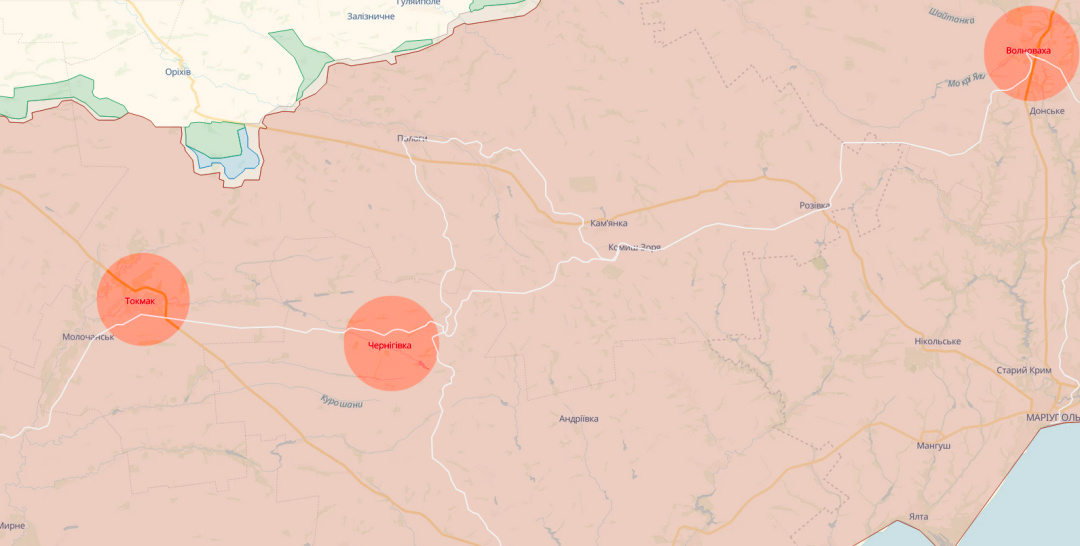
We will start cutting these threads that feed Tokmak.
"Such actions will force the Russians to withdraw from Enerhodar and from Tokmak itself, as they will be able to hold out for only a few days without supplies. The Russians will leave immediately because their equipment needs a constant supply of ammunition. Without ammunition, it's just a pile of iron. They will leave it and go away."
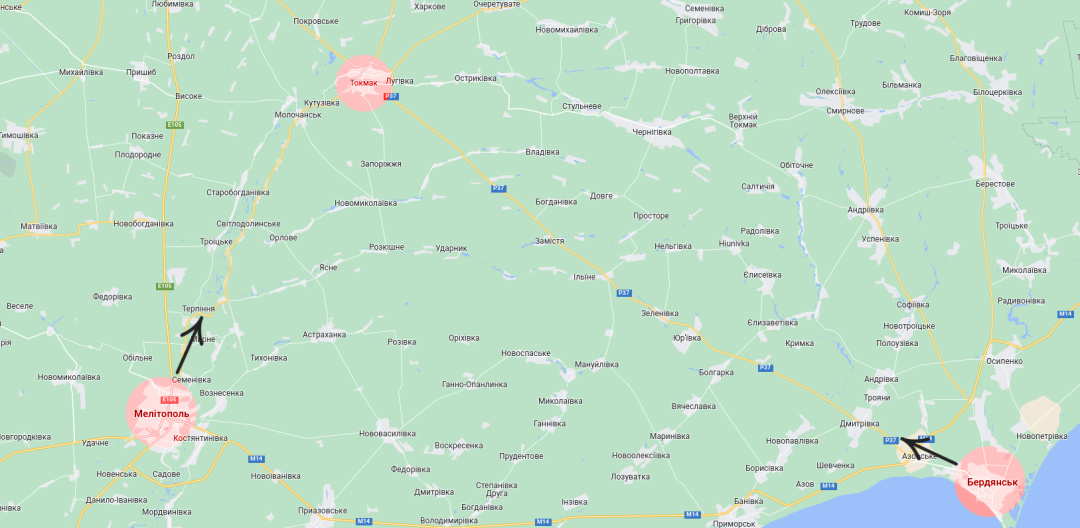
According to the military expert, this is exactly what the Armed Forces of Ukraine are counting on, which is why they are moving mainly only toward Tokmak, not even to Tokmak itself, but a little further east.
"We are now moving from Robotyne to Verbove and then will move south to the railroad. (...) The semi-flooding of Tokmak will lead to the destruction of the Russian front, especially on the left bank of the Kakhovka reservoir," Mr. Svitan summarized.
SIMILARITY OF THE SITUATION TO THE FIRST WORLD WAR? THIS IS EXACTLY THE THESIS SPREAD BY RUSSIA!
After the first wave of talk about the allegedly "slow offensive" of the Armed Forces of Ukraine, a second wave has risen in the West, with the main message that the situation in southern Ukraine is very similar to the First World War. And the First World War was minefields, trenches, strongholds and anti-tank ditches for hundreds of kilometers, long months of confrontation between two armies with no noticeable progress. How appropriate is this comparison? Optimists say that today, in the twenty-first century, the Armed Forces of Ukraine have the modern means, weapons, etc. to avoid such a scenario. One could immediately agree with this if, a hundred years ago, armies were not already armed with tanks, airplanes, and artillery. Of course, they were not as modern as they are now, but still...
"As for the trench warfare of the First World War... This comparison is not entirely appropriate. Why? First, we are talking about completely different times, and second, completely different technologies. The trench warfare that we are currently witnessing in the south cannot be compared to the trench warfare of 100 years ago," says Oleksandr Kovalenko.
Tokmak will not become Verdun, the fighting for it will not be an analog of the First World War, emphasizes the observer of the Information Resistance group: "No one will liberate this city in 10 months, the Armed Forces of Ukraine will do it much faster. The only thing that can be said is that sometime in late November or early December there may be an operational pause at the front, without any large-scale movements, but with positional battles. Can this be called a trench warfare? Only conditionally, because the pause will be caused by weather conditions, not anything else. But as soon as the winter passes, as soon as we step into early spring, the Ukrainian offensive in the south will intensify again."
Pavlo Lakiychuk shares the same opinion: "For those who compare the fighting in the south with the First World War, I would like to remind you that in addition to the Battle of the Somme and the Battle of the Marne, this war is also known for the Battle of Amiens and the Brusilov Offensive. Victory is forged not only by weapons, but also by an unexpected maneuver for the enemy."
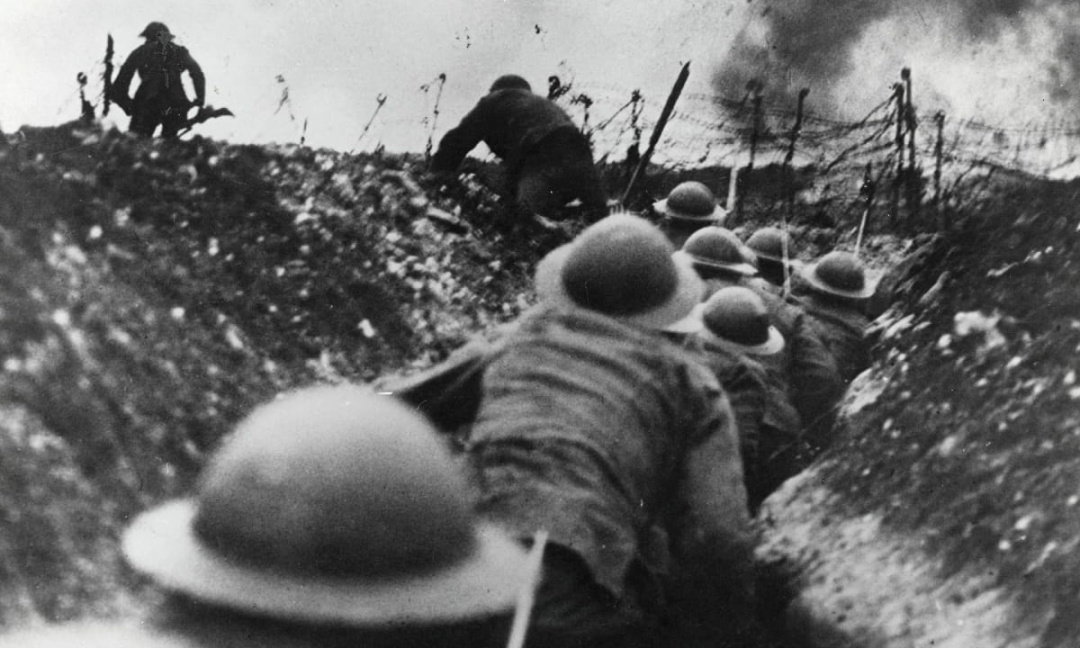
However, Yevhen Dykyi, a veteran of the Russian-Ukrainian war, scholar, and publicist, believes that this parallel is not unfounded. After all, the Surovikin Line itself is such a powerful, multi-kilometer-long reference to the First World War.
"Looking at it, one might even get the impression that we are fighting crazy historical reenactors," insists Mr. Dykyi. - "During the First World War, the whole of Europe was dug up in lines similar to the 'Surovikin lines' - with dozens of earthen trenches connected by rat mazes, and concrete pillboxes every 5-10 kilometers."
It was in these "Surovikin lines" that the soldiers from Remarque's famous novel All Quiet on the Western Front fought. It was in these "Surovikin lines" that millions of people lived for years and died...
"The Russians have built a miniature copy of the pan-European defense lines of 1914-1918 in the south and are now spreading the idea that if the war in such trench lines lasted for years and did not lead to a change in the front line in the early twentieth century, the same will happen now. Secondly, the Russians have learned to adjust their Psychological operations (PSYOP), they are no longer as "axe-like" and stupid as they were a year ago. After Kharkiv and Kherson, they are no longer floating the legend that "the Russian army always wins" - no one believes in that anymore - but instead they are promoting a new story about the so-called "battle draw" in the south," the expert says.
But this is not true. More precisely, as our interlocutor put it, it is not necessarily so.
"This scenario is the most desirable for the Russians. But it is far from certain that they will cope with this task. - emphasizes Yevhen Dykyi. - The question is how many personnel will be in these trenches and pillboxes, as well as how well these personnel will be provided with weapons and ammunition."
That is why the Armed Forces of Ukraine are currently working not so much with trenches and pillboxes as with the occupiers' reserves. And the occupiers have fewer and fewer reserves.
"The Armed Forces of Ukraine are working to ensure that at some point these trenches and pillboxes will become empty. Personally, I see reasons for cautious optimism. But more on that later. As far as technology is concerned, not much has really changed in 100 years. When I hear such a phrase as "drone warfare" now, I honestly feel a little funny. It's not a drone war, it's a war of infantry, just like in the First and Second World Wars. And drones and even art with armored vehicles are more or less an auxiliary tool. But first and foremost, this is a war of huge masses of ordinary soldiers," insists the former "Aidar" commander.
As for the breakthrough of the "Surovikin line," he argues that it is also absolutely appropriate to refer to the experience of the First World War. After all, with all the modern technology, humanity has not invented any other way to storm such lines in a hundred years than to first inflict maximum damage on the enemy with artillery, and then, in any case, an ordinary infantryman must either crawl on his stomach or run under fire with a rifle in his hands and jump into the enemy trench.
"And only there [in the trench] does the battle end. Unfortunately, nothing has changed since Remarque's time. In the end, it was during the First World War that the concept of "assault battalions" and "assault companies" emerged - units for breaking through enemy fortifications," says Mr. Dykyi. - "That's where assault infantry comes from - from the First World War, from these huge Surovikin lines."
However, all of the above does not mean that the situation is hopeless.
Yevhen Dykyi: "No defense line protects itself. It is protected by the personnel. And the Muscovites have problems with this - their reserves are melting away." Why do I think so? The first evidence for me was the deployment of Pskov paratroopers near Robotyne from the left bank of the Kherson region, which is also of great strategic value to Russia. If the Russians expose an important piece of the front, it means that there is simply nowhere else to take it. The second evidence is when our GURs destroyed strategic bombers at the "Soltsy" and "Shaykovka" airfields. The operation, as it became known, was carried out on enemy territory - from a neighboring forest somewhere behind a Christmas tree - using copters that fly several kilometers. And when the Russians began to think about "how we came to live like this," it turned out that strategic airfields, where, among other things, nuclear weapons carriers are located, are guarded by... aeromechanics. In their free time, they are given machine guns and placed on the perimeter. However, according to the correct staffing, a strategic airfield should be guarded by an entire motorized infantry battalion. And where did this battalion go? At the time of the GUR's operation in "Shaykovka", this motorized infantry battalion had been at the front for a month. That is, if the Muscovites remove the security of strategic airfields and send them to the front, this is a very clear indicator."
Another indicator is the attempted Russian diversionary offensive on the Svatovo-Kreminna line.
Dykyi said: "This is where they were attacking Lyman, where they are now attacking Kupiansk. Yes, they started all this to draw our forces away from the south. And it was indeed a smart move on the part of the enemy. But it turned out to be a two-sided game. It became known that the Russian Federation had to transfer paratroopers to Robotyne from Luhansk region. So, firstly, they have no reserves in the hinterland, they are removing security from the airfields, and secondly, everything combat-ready is already within the front. And what is called in Russia "Trishkin's caftan" begins, meaning that if you want to hem the right sleeve, you have to cut it off from the left. And that is why I believe that they will not succeed in playing out the World War I version, forcing us to fight for years against the Surovikin Line. Their defense is already cracking. But cracking and already falling apart are different things."
The Russian command is well aware of the price of the issue, and therefore, Mr. Dykyi predicts, they will now throw all their remaining reserves to Tokmak.
"The Armed Forces of Ukraine will face a difficult battle. But if we break through Tokmak, I think the enemy will simply not have enough reserves. Therefore, this line should fall apart," the expert summarized.
Myroslav Liskovych. Kyiv


